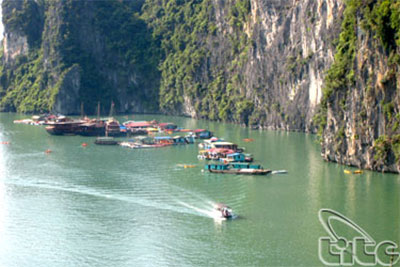The “Ha Long bay alliance” a joint public-private effort that will bring together US and Vietnamese government officials, private sector business partners, and key local and national stakeholders to help preserve and protect Ha Long bay was launched on April 15.

Funding from the US Agency for International Development (USAID), the Ha Long bay alliance aims to foster cooperation to ensure the sustainability of the Bay by raising the awareness and capacity of local nongovernmental and governmental organizations to effectively manage natural resources.
Well-known for one of Vietnam’s major international tourist attractions and a natural UNESCO World heritage site, the Ha Long bay also sustains a range of other economically important activities such as aquaculture, fisheries, harbor, mining and transportation. These economic development activities have increasingly placed pressure on the bay, degraded the environment, and made the livelihoods of communities who are dependent on the bay more vulnerable.
“I envision a broad public-private partnership of political actors, innovative businesses, and local organizations, working together to address the economic, environmental, and political challenges of preserving Ha Long bay”, said US Ambassador to Viet Nam, Mr David Shear.
To put real resources toward the alliance and local ownership of its development, USAID plans to make grants to the International Union for the Conservation of Nature (IUCN) and also to the Centre for Marinelife Conservation and Community Development (MCD), a local NGO, to help organize public and private partners as well as grassroots organizations to protect and restore the environment in the bay.
IUCN’s program is expected to emphasize policy dialogue, while MCD is expected to focus on grassroots engagement strengthening the capacity of local NGOs to facilitate improved natural resource management and sustainable economic development. These grants are funded through USAID’s Development Grants Program.